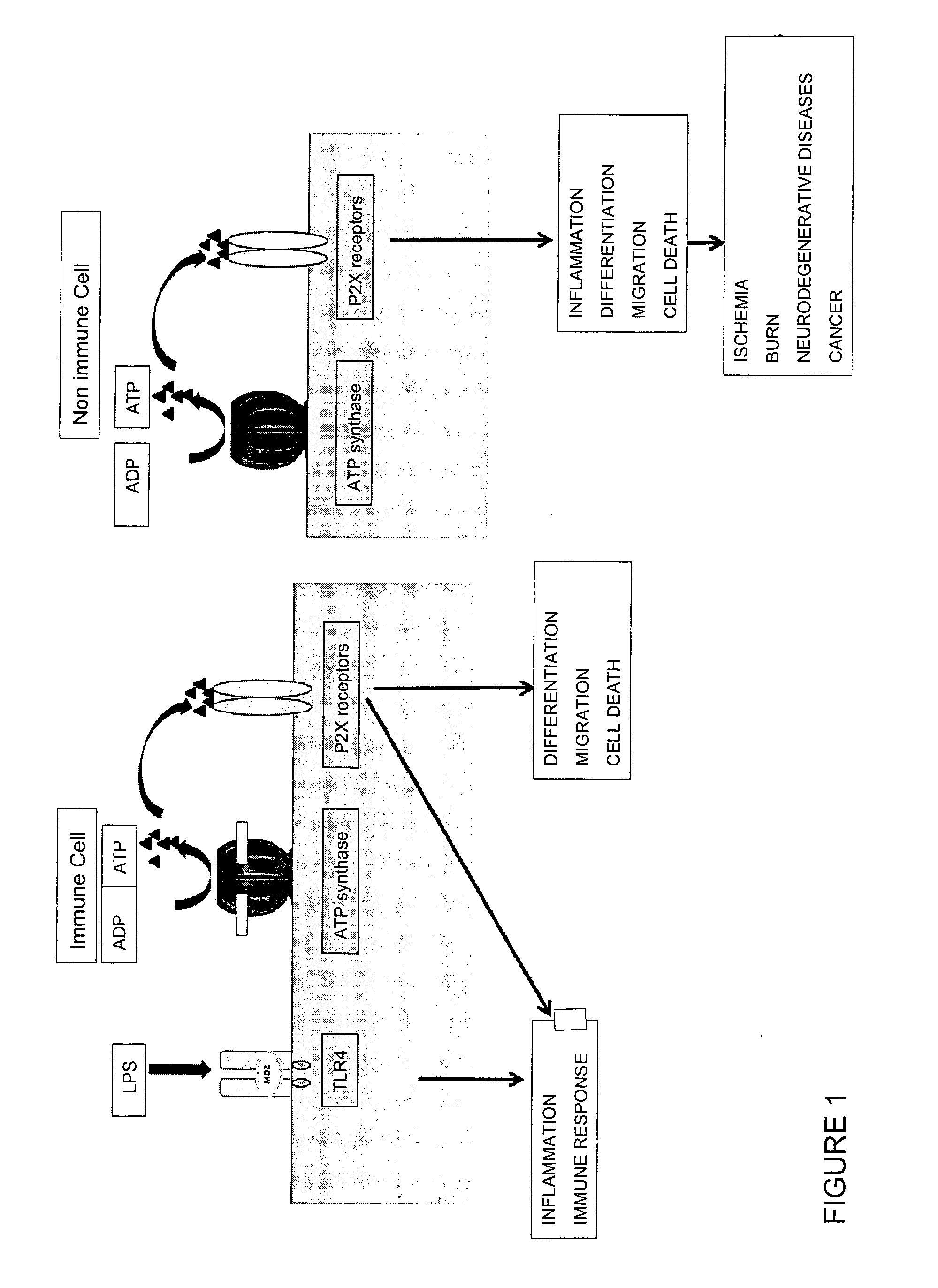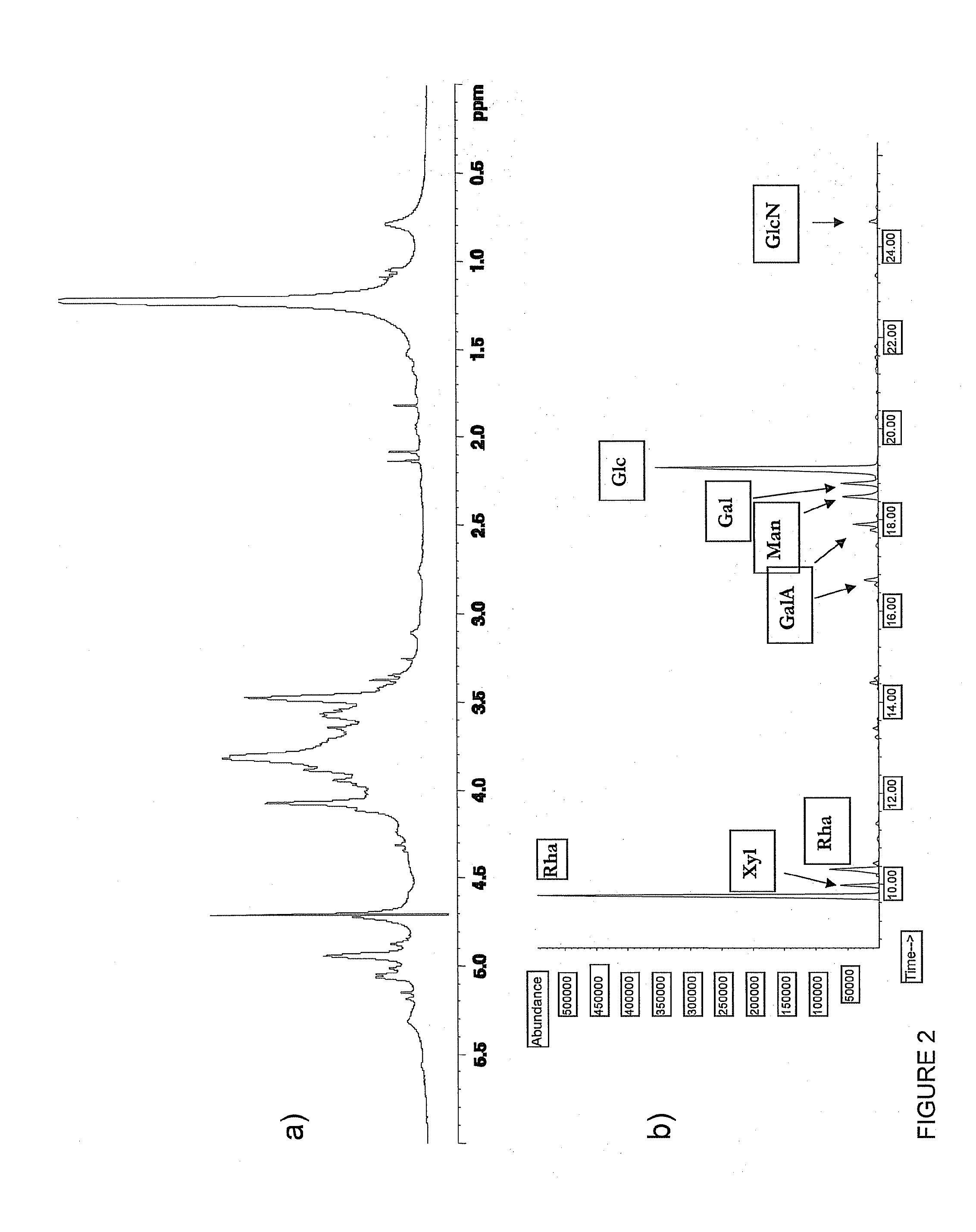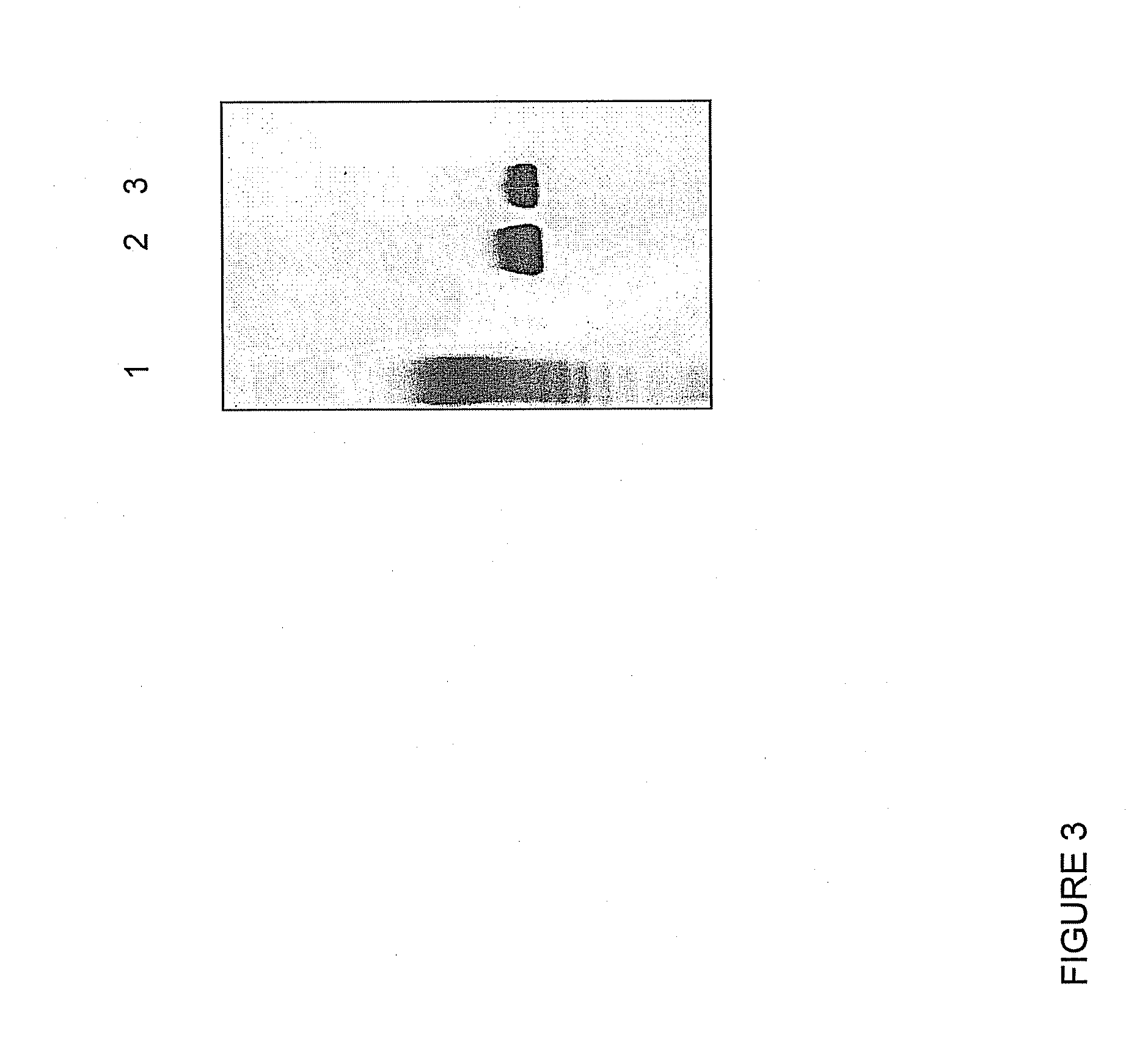Glycolipid Mixture with Anti-Inflammatory Activity Obtained from Oscillatoria Planktothrix
a technology of glycolipids and oscillatoria, which is applied in the direction of snake antigen ingredients, biochemistry apparatus and processes, pharmaceutical non-active ingredients, etc., can solve the problems of decreased synthesis of vascular prostacyclin, increased cardiovascular risk, and reduced inflammation
- Summary
- Abstract
- Description
- Claims
- Application Information
AI Technical Summary
Benefits of technology
Problems solved by technology
Method used
Image
Examples
example 1
Preparation of the Glycolipid Mixture from Cyanobacteria
[0043]Oscillatoria Planktothrix cyanobacteria FP1, CCAP repository No. 1459 / 45 (deposited on Sep. 7, 2008 in the Center for Culture Collection of Algae and Protozoa, Scotland, UK) were collected by centrifugation from the BG-11 culture medium (Cyanobacteria BG-11 freshwater solution cat. N. C3061, Sigma Aldrich). Collected cyanobacterial cells were frozen and thawed, diluted 1:2 with water, mixed with 3 volumes of Tri-reagent and 1 volume of chloroform and incubated for 10 minutes at room temperature. After incubation, cell debris were centrifuged at 2000×g for 15 min and the supernatant (aqueous phase), containing the active fraction, was recovered. The cyanobacterial cell pellet was further extracted by re-addition of water (an amount equal to the previously collected volume) and the sample was again centrifuged. Collected supernatants were precipitated with sodium acetate (10 mM final), 2 volumes of acetone and centrifuged. ...
example 2
Analysis of the Glycolipid Mixture
[0044]The mixture, extracted as described in Example 1, is a preparation consisting mainly of high molecular weight polar glycolipids extracted from the cyanobacterium Oscillatoria Plankothotrix FP1. The preparative procedure that makes use of a washing step with 70% ethanol removes phospholipids from the mixture.
[0045]The absence of free lipids has been verified by Folch partitioning (chloroform / methanol / water 3:2:1).
[0046]The absence of low molecular weight glycolipids such as monogalactosyl diacylglycerols (MGDG), digalactosyl diacylglycerols (DGDG), sulfoquinovosyl diacylglycerols (SQDG), phosphatidyl glycerol (PG) and rhamnolipids (RL) was verified by TLC, a method that is specific for these glycolipids. In addition, the mixture is characterized by the absence of protein contamination detectable by the Bradford method and the presence of ≦3% nucleic acid contamination.
[0047]FIG. 2a shows the 1D NMR spectrum of the OPFP1 mixture. In the spectrum...
example 3
Identification of the Membrane Receptor
[0057]To identify the plasma membrane receptor which mediates pharmacological effects, the mixture was conjugated to a fluorescent dye, and various human cell lines were used as targets for in vitro labeling experiments detected by fluorescence microscopy. In particular, cell lines derived from human melanoma (SKMEL-28), ovarian cancer (HEY4), neuroblastoma (SH-SY5Y) and an embryonic kidney epithelial cell line (HEK293) were tested (Molteni et al., Cancer Letter, 2006, 235:75-83). The glycolipid mixture was treated with sodium periodate (to oxidize the saccharidic component, thereby introducing a functional aldehyde group), incubated for 30 min at room temperature with Alexa 555 fluorochrome (Molecular Probe) and was finally incubated with sodium borohydride (1 mM). At the end of the incubation, the labeled glycolipid mixture was precipitated with sodium acetate / acetone and finally resuspended in water. For labeling experiments on various cell ...
PUM
| Property | Measurement | Unit |
|---|---|---|
| Fraction | aaaaa | aaaaa |
| Fraction | aaaaa | aaaaa |
| Fraction | aaaaa | aaaaa |
Abstract
Description
Claims
Application Information
 Login to View More
Login to View More - R&D
- Intellectual Property
- Life Sciences
- Materials
- Tech Scout
- Unparalleled Data Quality
- Higher Quality Content
- 60% Fewer Hallucinations
Browse by: Latest US Patents, China's latest patents, Technical Efficacy Thesaurus, Application Domain, Technology Topic, Popular Technical Reports.
© 2025 PatSnap. All rights reserved.Legal|Privacy policy|Modern Slavery Act Transparency Statement|Sitemap|About US| Contact US: help@patsnap.com



